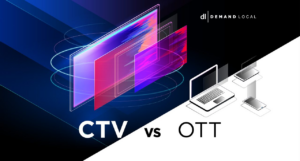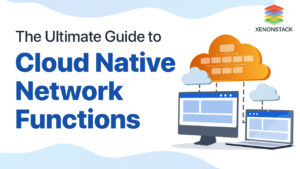Reaching out to the targeted audience requires an innovative approach. This is where narrowcasting comes in – the ability to precisely engage niche demographics using specialised content delivered through digital channels.
Read on to understand what narrowcasting entails and how you can leverage it to drive business growth.

What is Narrowcasting?
Narrowcasting refers to broadcasting content aimed at a very specific segment of the population, rather than the mass market approach of traditional radio or television.
It enables brands to tailor messaging to focused groups sharing common interests and needs.
Some key features of narrowcasting:
- Targeting a highly defined demographic, psychographic, or geographic audience
- Delivering specialised content relevant to that audience
- Using mediums with targetable delivery like apps, websites, niche channels, etc.
- Two-way engagement and interactivity
- Measurable data and analytics on user engagement
Narrowcasting contrasts broadcast media designed for broad mainstream appeal. Instead of trying to attract all consumers, narrowcasting speaks directly to those most likely to convert.
Narrowcasting vs Broadcasting
Broadcasting
- One-way mass communication
- Broad mainstream appeal
- Generic messaging
- Passive consumption
- Less measurable data
Narrowcasting
- Two-way targeted communication
- Focused niche appeal
- Tailored messaging
- Interactive engagement
- Rich measurable data
While broadcasting reaches the widest range of people, narrowcasting fosters more personalised connections with audiences that matter most.
Combining both allows brands to execute an integrated strategy.
Developing A Narrowcasting Strategy
Successful narrowcasting requires strategic planning and execution:
- Determine your audience – Identify the niche demographic or geography that closely aligns with your offerings. The more sharply defined, the better.
- Choose your channels – Evaluate media formats and platforms where your audience is highly engaged to determine optimal delivery.
- Create targeted content – Produce informative and engaging content tailored to your audience’s specific interests and preferences.
- Foster engagement – Develop interactive content like surveys, live chats, and contests to spark two-way interactions with the audience.
- Analyse data – Track and measure detailed metrics on audience responses for further refinement.
- Integrate with broader strategy – Use narrowcasting to complement your general marketing by amplifying reach within profitable niche segments.
By taking a strategic approach, you can ensure narrowcast efforts directly support core business goals like increased brand affinity and conversions within target groups.

Narrowcasting Mediums and Tactics
Narrowcasting can be executed across myriad digital marketing and advertising channels:
Websites
- Niche websites focused on specialised topics to attract engaged visitors.
- Targeted website content like whitepapers, e-books, and blog posts tailored to key buyer personas.
- Retargeting ads that follow website visitors around the internet to drive conversions.
Social Media
- Facebook/Instagram ads are shown only to specific user groups based on interests and demographics.
- Targeted posts and social content relevant to defined niches using hashtags, captions, and visuals.
- Influencer marketing partnering with micro-influencers in your vertical.
- Social live video (Instagram Live, Facebook Live) with niche appeal.
Video/CTV
- Connected TV advertising on niche streaming channels aligned with your audience.
- Targeted YouTube pre-roll ads enabled by Google Ads.
- Brand sponsorships of specialised video content.
Audio
- Podcast sponsorships for podcasts with relevant listener profiles.
- Pandora audio ads use data targeting on music tastes.
- SiriusXM satellite radio spots on niche music/talk channels.
Mobile
- Geotargeting to reach users when near your locations.
- Apps and games are popular with your buyer personas.
- SMS/MMS marketing through opt-in lists.
- Location-based push notifications.
Direct Engagement
- Email newsletters focused on specific customer interests.
- Webinars and events on highly relevant niche topics to attract engaged audiences.
- User surveys to collect data and feedback from defined groups.
These approaches allow you to surround your audience with relevant touchpoints using data-driven personalization at scale.
Benefits of Narrowcasting
Deployed effectively, narrowcasting offers considerable advantages over mass media:
- Sharper targeting – Reach consumers most likely to have interest and convert.
- More relevance – Content tailored to a niche generates higher engagement levels.
- Measurability – Detailed data provides clarity on tactics working or needing change.
- Accessibility – Digital mediums allow cost-efficient targeting at scale.
- Customer understanding – Foster’s valuable insights into key buyer personas.
- Interactivity – Two-way communication strengthens consumer relationships.
- Complement to broader efforts – Multiplies impact of general branding and awareness work.
While it requires upfront research and planning, narrowcasting represents an indispensable tool for marketers seeking to cut through the noise and efficiently engage today’s specialized audiences. It produces measurable results.
Real World Examples of Effective Narrowcasting
- Software company HubSpot created a dedicated blog covering inbound marketing tactics, fueling their rapid growth in selling to digital marketers.
- Starbucks built a multi-million follower community on Instagram through content celebrating coffee passion and its cafe culture.
- Fitness brand Peloton cultivated an engaged user base with its proprietary app and interactive workout streams.
- Auto parts retailer AutoZone sponsors niche car enthusiast podcasts like CarCast aligned with its DIY mechanic audience.
- The Skimm email newsletter curates digestible news for young professional women, monetizing through sponsorships.
These examples demonstrate the range of narrowcasting approaches available and the ability to drive business success by becoming integral to target consumer communities.

Frequently Asked Questions (FAQ)
Q1. What are some best practices for effective narrowcasting?
Ans. Clearly define and understand your target audience. Use data to hone in on profitable niches; Create consistent, high-quality content tailored to audience interests. Involve them and respond; Carefully select media channels/placements your niche actively engages with. Prioritise quality reach; Set KPIs to track audience engagement and conversion metrics; Continuously refine efforts based on performance; Integrate narrow efforts into broader branding and awareness activity.
Q2. What types of businesses benefit most from narrowcasting?
Ans. Narrowcasting works best for companies with specialized offerings that appeal to defined market segments like SaaS, professional services, healthcare, financial services, and hobby brands. Mass marketers see more benefits from broader outreach.
Q3. How is narrowcasting used in marketing?
Ans. Common marketing narrowcasting tactics include targeted social ads, personalized emails, niche community building through content and social media, micro-influencer collaborations, and leveraging interest and behavioral data for all digital targeting. It reaches the right audiences.
Q4. Is narrowcasting more effective than broadcasting?
Ans. Narrowcasting generally delivers better ROI, relevance, and engagement with target groups, but lacks broadcasting’s broad reach. Smart marketers combine niche narrowcasting with some broadcast tactics to achieve wide awareness and deep engagement.
Q5. What are some challenges associated with narrowcasting?
Ans. Narrowcasting requires upfront investment into understanding niches and developing specialized content. Performance data is imperative to refine and optimize efforts. It may lack broadcasting’s simplicity but provides precision.




